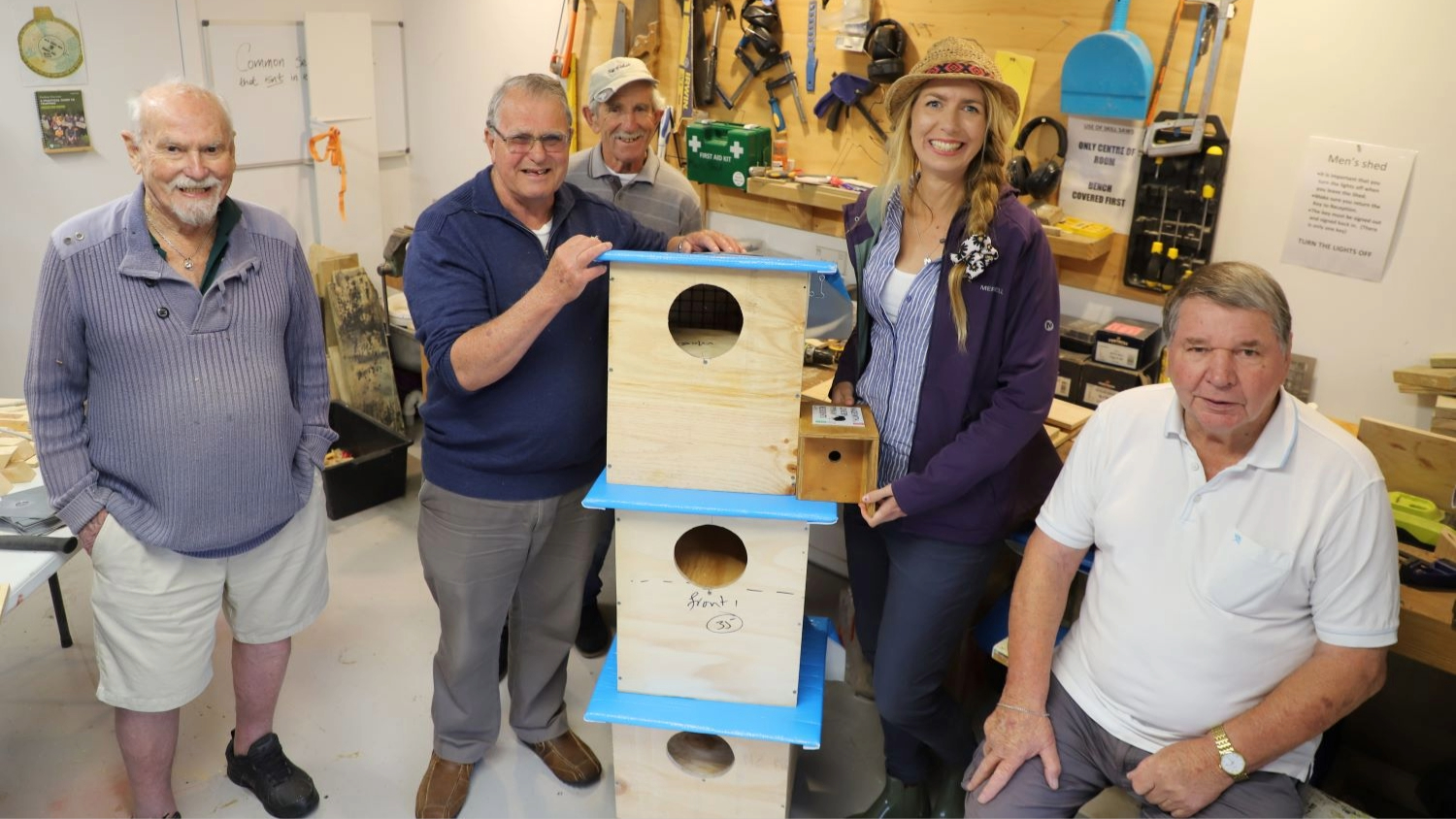
The Biodiversity Story
Rich in Biodiversity…
The rocky volcanic outcrops of Banks Peninsula are naturally rare ecosystems and support high concentrations of threatened and endemic species of plants, lizards and invertebrates.
Sea cliffs and rocky shorelines provide habitats for a wealth of bird and marine life, traditionally a major source of mahinga kai for tangata whenua.
The sand dune landscape of Kaitōrete is nationally significant and supports rare and threatened native flora and fauna.
Much of the original forest vegetation was removed by Māori and early European settlers but patches of original forest remain. This includes beech forest at Hinewai, podocarp forest in the Hay and Mount Herbert Scenic Reserves and Ahuriri QEII Reserve, kaikawaka/cedar forest at Armstrong Reserve, and Palm Gully Scenic Reserve with its southern-most nikau groves.

The Peninsula is the southern limit for several warm-temperate plant species and the northern limit for a few southern species.
Six plant species are endemic to the Peninsula and a further 41 species are classified as regionally endangered or threatened.
About 60 invertebrate species are endemic to the Peninsula.
Three of the six reptile present are classified as threatened.
Twelve indigenous bird species were considered to be locally extinct, although one (tūī) has been reintroduced.

What we are monitoring…
Vegetation Monitoring…

- Mistletoe Monitoring (in DOC & CCC reserves, private properties & Akaroa Area School)
- Forest Indicator Species Vegetation Monitoring
- Photopoints (The process includes retaking photopoints and a simplified, presence/absence version of the Forest Vegetation Indicator Species Transect undertaken
- Tmesipteris horomaka (T. horomaka) is a small fork fern mostly found on the trunks of adult tree ferns in old growth forest. It is endemic to Banks Peninsula and is classed as ‘Threatened – Nationally Endangered’
- 20mx20m Permanent Vegetation Plots in Misty Peaks & Hinewai Transects.

Bird Monitoring...

- Tītī Burrow Occupancy Monitoring (the predator proof fence surrounding the tītī colony at Stony Bay has an ongoing concern of rats within the fence)
- Banded Tūī sightings (community Tūī monitoring and banding)
- Kororā Survey – Pōhatu Colony Microchipping & GPS Tracking
- BP Sea Bird Nesting Surveys
- Wetland Bird Surveys
- Cacophonometers (these are long term bird audio recorders. They record 40 seconds of audio approximately every hour and identify individual species of bird song)
- Riflemen Nesting Boxes
- Hinewai 20min Bird Counts

Invertebrate Monitoring…

- Invertebrate Surveys – Wooden Discs.
- Wētā Motels. During the summer of 2022-2023: 3 sites of wētā motels and wooden discs were revisited and findings recorded
- Ryman Healthcare. The residents of Charles Upham Retirement Village, made 50 rifleman nesting boxes, 43 ruru nesting boxes & 50 wētā motels. These have been distributed into the community. Riflemen boxes have been established on private properties where rifleman have been seen or heard.
- Biodiversity Monitoring Workshops
- Akaroa Area School Eco Warriors. 10 of the new wētā motels were set up in the Garden of Tane.

Lizard Monitoring…

- Spotted Skink Surveys.
Canterbury spotted skinks (Oligosoma lineoocellatum) are regarded as “Threatened – Nationally Vulnerable” with only a few sites across Banks Peninsula known to have them.
Rats and mice are the biggest concern. Recorded sex, snout to vent length, tail (and/or regrowth) length and photographed for accurate individual identification from top, side and underneath - Ongoing monitoring of spotted skinks, grass skinks and Waitaha gecko and ID.
- Artificial Retreats
- Marieke Lettink (herpetologist) felt the numbers of skinks caught and seen were positive and it is likely that the population is in reasonable health.

Opportunistic Monitoring…

- Bat Monitoring: two observant locals reported encounters with what they believed to be bats. Bats have not been officially recorded as living on BP for decades. Ecan Zone Committee supplied funding for DOC Bat Detectors. Audio recorders have been installed near various sites.
- Stream ecology – electric fishing and eDNA
- Possum scat analysis to detect mistletoe using DNA. The advantage to detecting mistletoe in possum diets using molecular analysis of their scat, is to provide a method for monitoring the often elusive mistletoe populations
- Islands photographed by drone
- Jeweled gecko sightings.

Highlights from the season…

- Very positive collaboration between agencies, landowners, rūnanga, schools and the wider community
- Biodiversity Monitoring Workshops
- RNZ Jesse Mulligan interview on wētā
- Ryman Healthcare partnership allowing a lot more community participation
- Ngāi Tahu putting up $15,000 for a feasibility study for alternative tītī colony
- Pōhatu long-term study on kororā including GPS tracking combined with sea floor mapping project
- Funding (and in-kind) help from ECan, Brian Mason Trust, Society of NZ Canterbury Branch, Lincoln University, Ryman Healthcare, Maurice White Trust, NZ Wildings Control Group, Wildlands, WSP & ZIP.

Making a Ruru Nesting Box

Learn how to build your own Ruru nesting box with this PDF.



